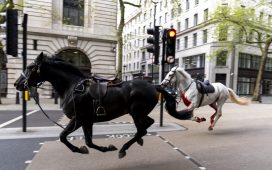Ketton Quarry is a great sprawling excavation eating up four square kilometres of land between Stamford and Rutland Water. The quarry feeds limestone into the mighty cement works, although even its towering pale stacks, dominating the landscape west of Stamford, have stopped spewing steam for periods during the last year.
The expansion of the buff cliffs of the quarry means that a local road has been deviated north and now bridges over a narrow canyon, built to enable the diesel plant down in the bottom of the quarry to crawl out under the road and attack fresh, unsuspecting stone.

The shiny new road runs alongside the site of the Edith Weston quarries. Now clothed in young woodland, in about 1900 this quarry started producing high-quality, even-grained “Ketton freestone”, which was used for prestige buildings. Blocked up with steel grills, the jagged, cavernous mouth of a mine – sitting in the bottom of a deep hollow – is both foreboding and intriguing. A serpentine wooded gorge traverses the site, and around it are the rusting and decaying husks of the quarry workshops and offices. Not long after the mining started, an orchard was planted alongside, and today strapping, grey-naped fieldfares are gorging on the abandoned but enduring apples.

As the immense Ketton Quarry has spread around it, the orchard has become a promontory, overlooking the workings. Watching from it, a kronking echoes across the quarry and a raven sweeps along the cliff and under the new road bridge.
The raven is a recent recoloniser of these parts, but its arrival may not have been appreciated by one former local landowner. The 11th-century Queen Edith, wife of Edward the Confessor, who gave her name to the village and quarry, would have known the raven as the motif on Landøyðan (Land-Waster) – the totemic banner of Harald Hardrada, the Norwegian king. A claimant to Edith’s throne, Harald invaded, lost his banner and was killed by an arrow 100 miles north of here, during battle in 1066 with her brother, and by then King, Harold. Just three weeks later, in Hastings, Harold himself had an appointment with an arrow.
• Country Diary is on Twitter at @gdncountrydiary








